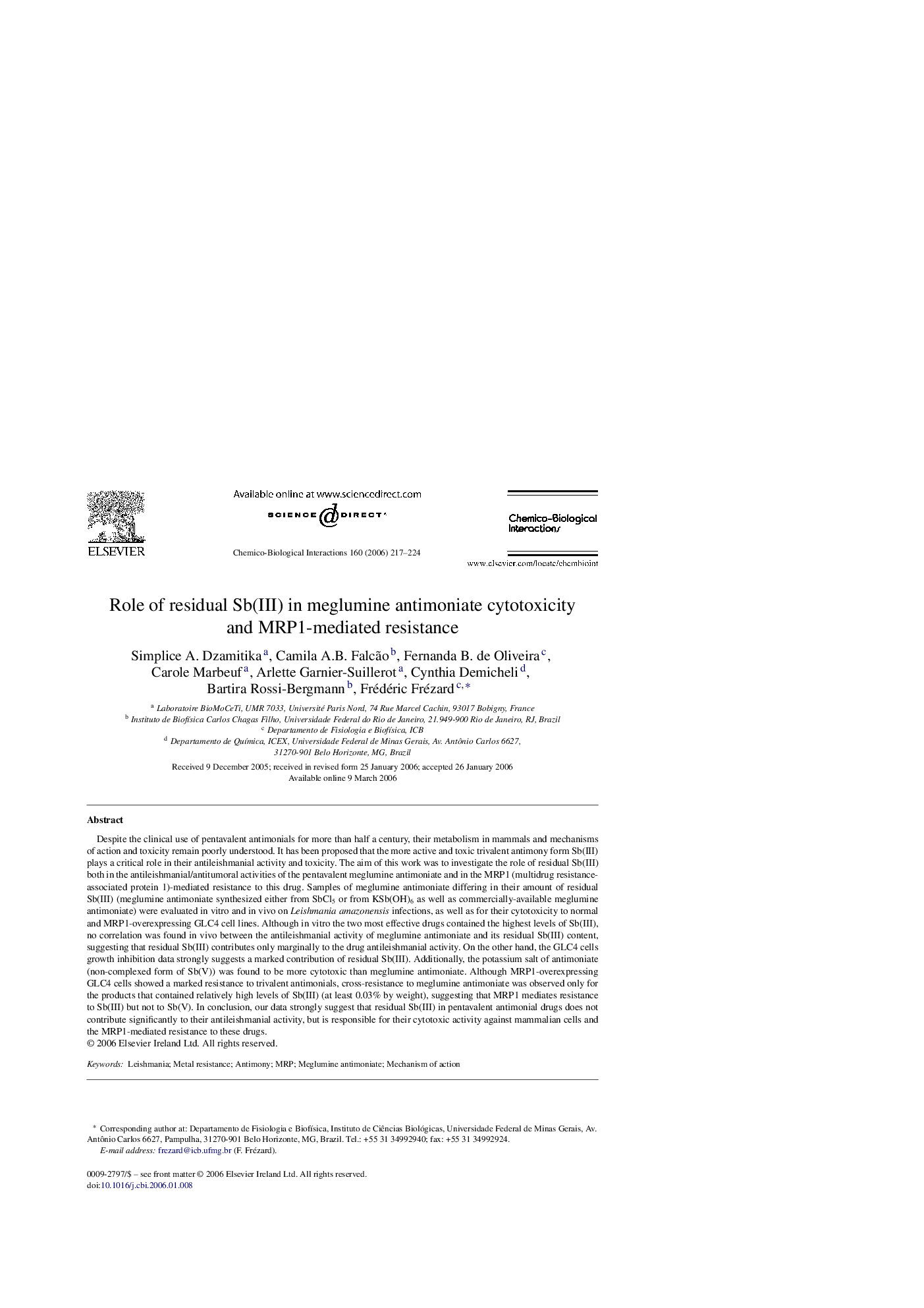| کد مقاله | کد نشریه | سال انتشار | مقاله انگلیسی | نسخه تمام متن |
|---|---|---|---|---|
| 2582522 | 1561658 | 2006 | 8 صفحه PDF | دانلود رایگان |

Despite the clinical use of pentavalent antimonials for more than half a century, their metabolism in mammals and mechanisms of action and toxicity remain poorly understood. It has been proposed that the more active and toxic trivalent antimony form Sb(III) plays a critical role in their antileishmanial activity and toxicity. The aim of this work was to investigate the role of residual Sb(III) both in the antileishmanial/antitumoral activities of the pentavalent meglumine antimoniate and in the MRP1 (multidrug resistance-associated protein 1)-mediated resistance to this drug. Samples of meglumine antimoniate differing in their amount of residual Sb(III) (meglumine antimoniate synthesized either from SbCl5 or from KSb(OH)6 as well as commercially-available meglumine antimoniate) were evaluated in vitro and in vivo on Leishmania amazonensis infections, as well as for their cytotoxicity to normal and MRP1-overexpressing GLC4 cell lines. Although in vitro the two most effective drugs contained the highest levels of Sb(III), no correlation was found in vivo between the antileishmanial activity of meglumine antimoniate and its residual Sb(III) content, suggesting that residual Sb(III) contributes only marginally to the drug antileishmanial activity. On the other hand, the GLC4 cells growth inhibition data strongly suggests a marked contribution of residual Sb(III). Additionally, the potassium salt of antimoniate (non-complexed form of Sb(V)) was found to be more cytotoxic than meglumine antimoniate. Although MRP1-overexpressing GLC4 cells showed a marked resistance to trivalent antimonials, cross-resistance to meglumine antimoniate was observed only for the products that contained relatively high levels of Sb(III) (at least 0.03% by weight), suggesting that MRP1 mediates resistance to Sb(III) but not to Sb(V). In conclusion, our data strongly suggest that residual Sb(III) in pentavalent antimonial drugs does not contribute significantly to their antileishmanial activity, but is responsible for their cytotoxic activity against mammalian cells and the MRP1-mediated resistance to these drugs.
Journal: Chemico-Biological Interactions - Volume 160, Issue 3, 15 April 2006, Pages 217–224